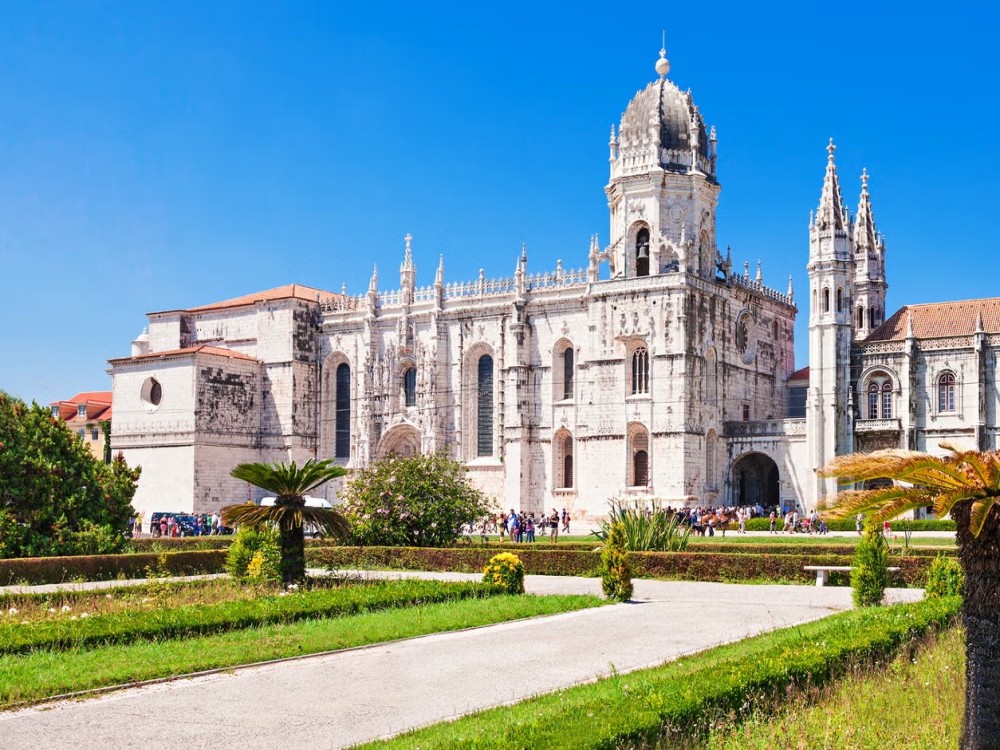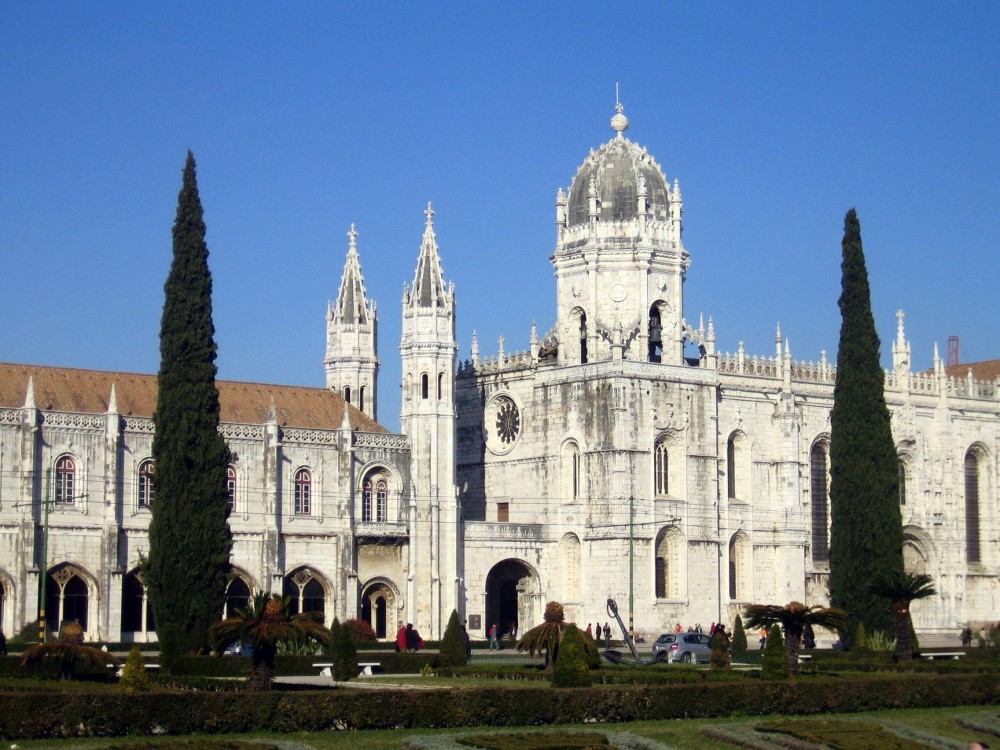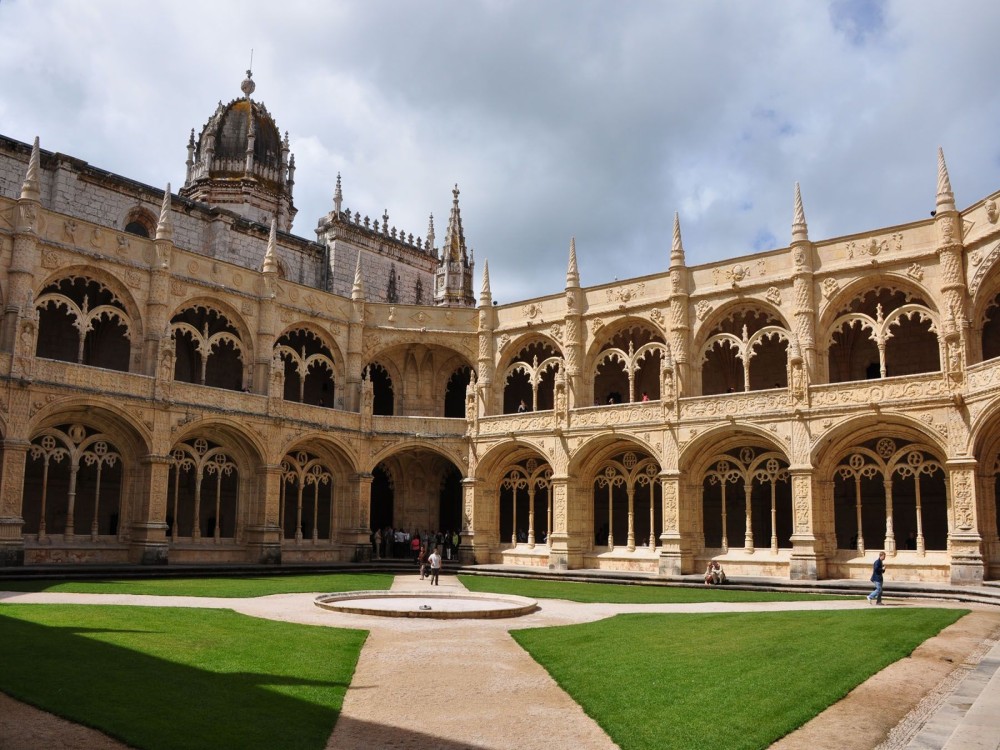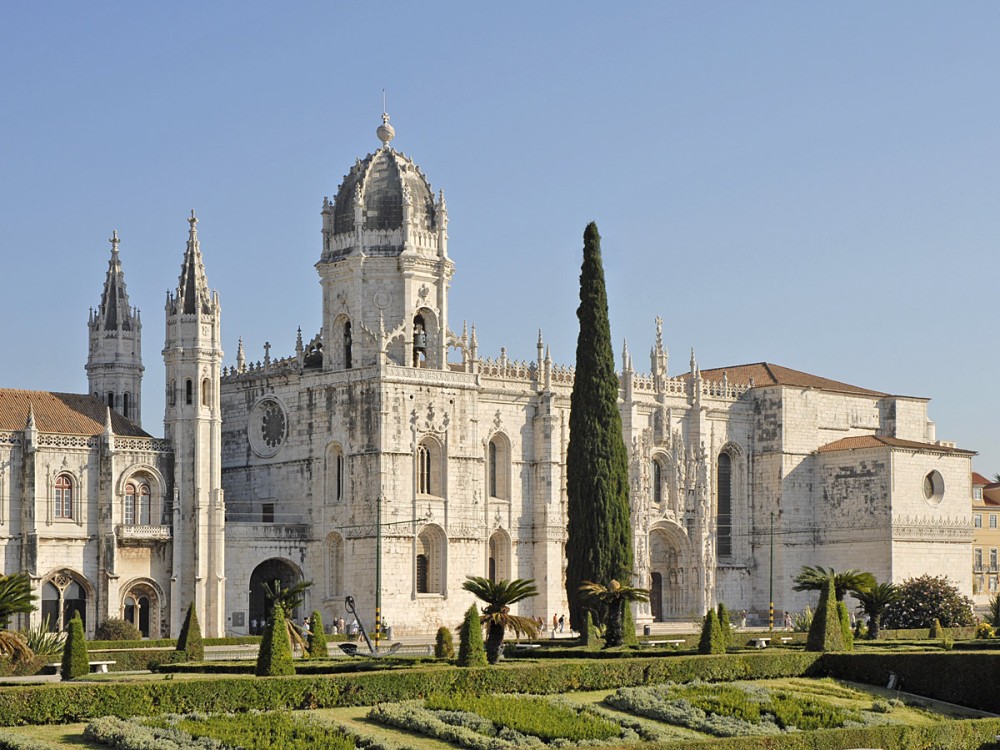- Portugal
- Things to do in Lisbon
- Jerónimos Monastery

Jerónimos Monastery
The Jerónimos Monastery (Mosteiro dos Jerónimos) is one of Lisbon’s most impressive and historically significant landmarks, known for its stunning Manueline architecture and its deep connection to Portugal’s Age of Discovery. Located in the Belém district, this UNESCO World Heritage site was built in the 16th century to honor Vasco da Gama’s successful voyage to India. The monastery is a masterpiece of Portuguese Gothic architecture, with intricate stone carvings, ornate facades, and beautifully designed cloisters. It once housed monks who prayed for the king’s soul and provided assistance to sailors, making it a center of spiritual and royal life. Today, the monastery is a must-see for anyone visiting Lisbon, offering a glimpse into the city’s rich maritime history and architectural splendor.
Jerónimos Monastery Tours & Excursions
The Basics
The Jerónimos Monastery was commissioned by King Manuel I to commemorate Vasco da Gama’s voyage and to give thanks for Portugal’s successful explorations. Its most striking feature is the elaborate façade, featuring maritime motifs, twisted columns, and intricate detailing, all representative of the Manueline style. Inside, visitors can explore the vast church, where Vasco da Gama’s tomb is located, as well as the peaceful and ornate cloisters. The monastery is home to the National Archaeological Museum, and it also houses the tomb of the famous Portuguese poet Luís de Camões. With its beautiful architecture and serene surroundings, the Jerónimos Monastery is a place of both historical and cultural significance.
Things to Know Before You Go
The Jerónimos Monastery is one of Lisbon’s top tourist destinations, so it’s best to visit early in the morning or later in the afternoon to avoid large crowds. The entrance fee is required for access to the church and cloisters, but it’s worth it for the opportunity to explore the monastery's stunning interior. While the monastery is wheelchair accessible, be prepared for some steps if you wish to explore the cloisters and other areas. The site can be very busy during the summer months, so consider booking tickets in advance or visiting during the off-season for a more relaxed experience. Audio guides are available in multiple languages, providing a deeper understanding of the monastery’s history.
How to Get There
The Jerónimos Monastery is located in the Belém district, easily accessible from the city center. You can take tram 15E or 28 from central Lisbon (Baixa or Chiado), which will take you directly to the Belém area. Alternatively, you can take the bus or metro to the Cais do Sodré station and transfer to a tram or bus. For those traveling by train, the Belém train station is nearby, making it easy to reach. Once you arrive, the monastery is just a short walk from the tram stop. It’s a central location, surrounded by other key attractions, so it’s easy to visit multiple sites in one trip.








When to Get There
The best time to visit Jerónimos Monastery is early in the morning when the crowds are fewer, and the temperature is cooler. The site can become very crowded during peak hours, especially in the summer, so visiting first thing allows you to explore the monastery more peacefully. Late afternoon is also a good time to visit when the sun casts a warm glow over the monastery’s beautiful architecture. The monastery is open year-round, but consider visiting during the off-season (spring or fall) to avoid the larger summer crowds while still enjoying pleasant weather.
Day Trips from Lisbon
The Jerónimos Monastery is part of the Belém district, which is home to several other must-see attractions, making it perfect for a day trip. After exploring the monastery, you can visit the nearby Belém Tower (Torre de Belém), a UNESCO World Heritage site that once protected the city’s harbor. Another nearby attraction is the Monument to the Discoveries (Padrão dos Descobrimentos), which celebrates Portugal’s maritime explorers. For a sweet treat, don’t miss the famous Pastéis de Belém bakery, where you can try the iconic custard tarts. The area is also home to several museums, including the Berardo Collection Museum and the Museu de Arte, Arquitetura e Tecnologia (MAAT), making it an ideal destination for a full day of sightseeing.
Copyright © 2025 All Rights Reserved


